What to do if my Panasonic CS-E9DKDW has insufficient refrigerant (gas leakage)?
- CCatherine PhillipsAug 7, 2025
If your Panasonic Air Conditioner has insufficient refrigerant due to gas leakage, diagnose and repair the refrigerant leak.

What to do if my Panasonic CS-E9DKDW has insufficient refrigerant (gas leakage)?
If your Panasonic Air Conditioner has insufficient refrigerant due to gas leakage, diagnose and repair the refrigerant leak.
What to do if my Panasonic CS-E9DKDW has inefficient compression?
To address inefficient compression in your Panasonic Air Conditioner, it's recommended to check the compressor for efficiency and service it if needed.
What to do if there is a short circuit in the indoor unit of my Panasonic CS-E9DKDW?
If your Panasonic Air Conditioner's indoor unit has a short circuit, inspect it and repair as necessary.
What to do if the capillary tube or strainer is clogged in my Panasonic CS-E9DKDW Air Conditioner?
If the capillary tube or strainer in your Panasonic Air Conditioner is clogged, clear the clog.
| Refrigerant | R32 |
|---|---|
| Power Supply | 220-240 V, 50 Hz |
| Indoor Unit Dimensions (W x H x D) | 799 x 290 x 197 mm |
| Outdoor Unit Dimensions (W x H x D) | 650 x 511 x 230 mm |
| Cooling Capacity | 2.50 kW (Rated) |
Explains the functions and usage of the remote control unit.
Details the features and operations of the indoor unit.
Describes the features and operations of the outdoor unit.
Specifies technical details for the CS-E9DKDW/CU-E9DKD model.
Specifies technical details for the CS-E12DKDW/CU-E12DKD model.
Provides installation and physical dimensions for the indoor unit and remote.
Provides installation and physical dimensions for the outdoor unit.
Covers fundamental operation principles and internal settings.
Details how compressor frequency is determined and adjusted.
Explains the thermostat control logic for cooling mode.
Details thermostat control for soft dry mode.
Details thermostat control for heating mode.
Explains automatic mode selection based on temperatures.
Covers fan motor speeds and control settings.
Outlines indoor fan control logic for different modes.
Details indoor fan control logic specific to heating mode.
Explains fan motor specifications and feedback control.
Describes the deodorizing function and its operation.
Details the operation of the outdoor fan motor.
Explains vertical and horizontal airflow control.
Details vertical vane angle control for different modes.
Details horizontal vane angle control for different modes.
Explains quiet operation for cooling and dry modes.
Explains quiet operation for heating mode.
Details how powerful mode achieves target temperature quickly.
Explains the function of the delay ON timer.
Explains the function of the delay OFF timer.
Describes the auto restart function after power interruption.
Details the meaning of various indicator LEDs on the unit.
Explains how to use the auto operation switch.
Explains the ionizer function for air purification.
Details how ionizer problems are detected and indicated.
Provides case studies for ionizer operation scenarios.
Explains protection controls applicable to all operating modes.
Covers protection controls specific to cooling and soft dry modes.
Covers protection controls specific to heating mode.
Safety guidelines for installing the air conditioner unit.
Critical safety warnings and guidelines to follow during installation.
Guidance on choosing the optimal location for unit installation.
Guidelines for selecting the best installation location for the indoor unit.
Steps for securely mounting the indoor unit installation plate.
Instructions for drilling and installing the wall sleeve for piping.
Step-by-step instructions for installing the indoor unit.
Procedure for connecting electrical cables to the indoor unit.
Guidelines for selecting the best installation location for the outdoor unit.
Steps for securely installing the outdoor unit.
Instructions for connecting refrigerant piping to the outdoor unit.
Procedure for evacuating air from the system before charging refrigerant.
Procedure for connecting electrical cables to the outdoor unit.
Instructions for insulating refrigerant piping.
General overview of R410A refrigerant and its characteristics.
Critical safety precautions for handling R410A refrigerant piping.
Details the specific tools required for R410A installations.
Compares R410A tools with R22 tools and lists compatibility.
Guidelines on selecting appropriate copper tubing for R410A.
Steps for preparing and connecting refrigerant pipes.
Method for checking for gas leaks after installation using a vacuum pump.
Instructions for transferring the unit with new refrigerant piping.
Considerations for replacing units using existing piping.
Information on refrigerant compatibility issues.
Procedure for recharging refrigerant during service operations.
Techniques and precautions for brazing refrigerant pipes.
Practical advice for servicing the air conditioner.
Guide to diagnosing and resolving common operational issues.
How pressure and current relate to various operating conditions.
Step-by-step guide to remove the indoor unit's control board.
Steps for removing the electronic controller.
Procedures for removing the fan motor and cross flow fan.
Steps for removing the outdoor unit's electronic controller.
Performance data based on outdoor temperature and piping length.
Chart showing sensible cooling capacity under various conditions.
Exploded view specific to the CS-E9DKDW/CS-E12DKDW models.
Replacement parts specific to the CS-E9DKDW/CS-E12DKDW models.
Exploded view specific to the CU-E9DKD/CU-E12DKD models.
Replacement parts specific to the CU-E9DKD/CU-E12DKD models.
Circuit diagram for the indoor unit.
Circuit diagram for the outdoor unit.
Diagram of the remote control's printed circuit board.
Layout of the indoor unit's printed circuit board.
Layout of the outdoor unit's printed circuit board.
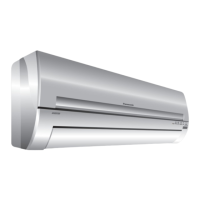
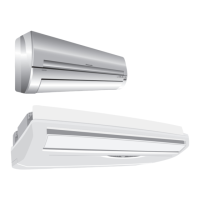

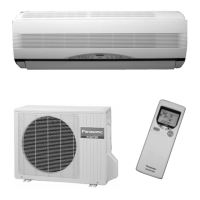

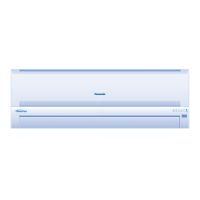

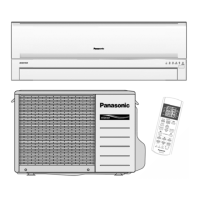
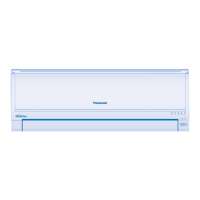
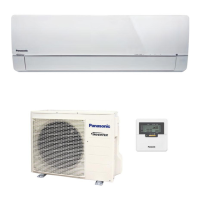
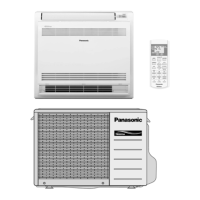

